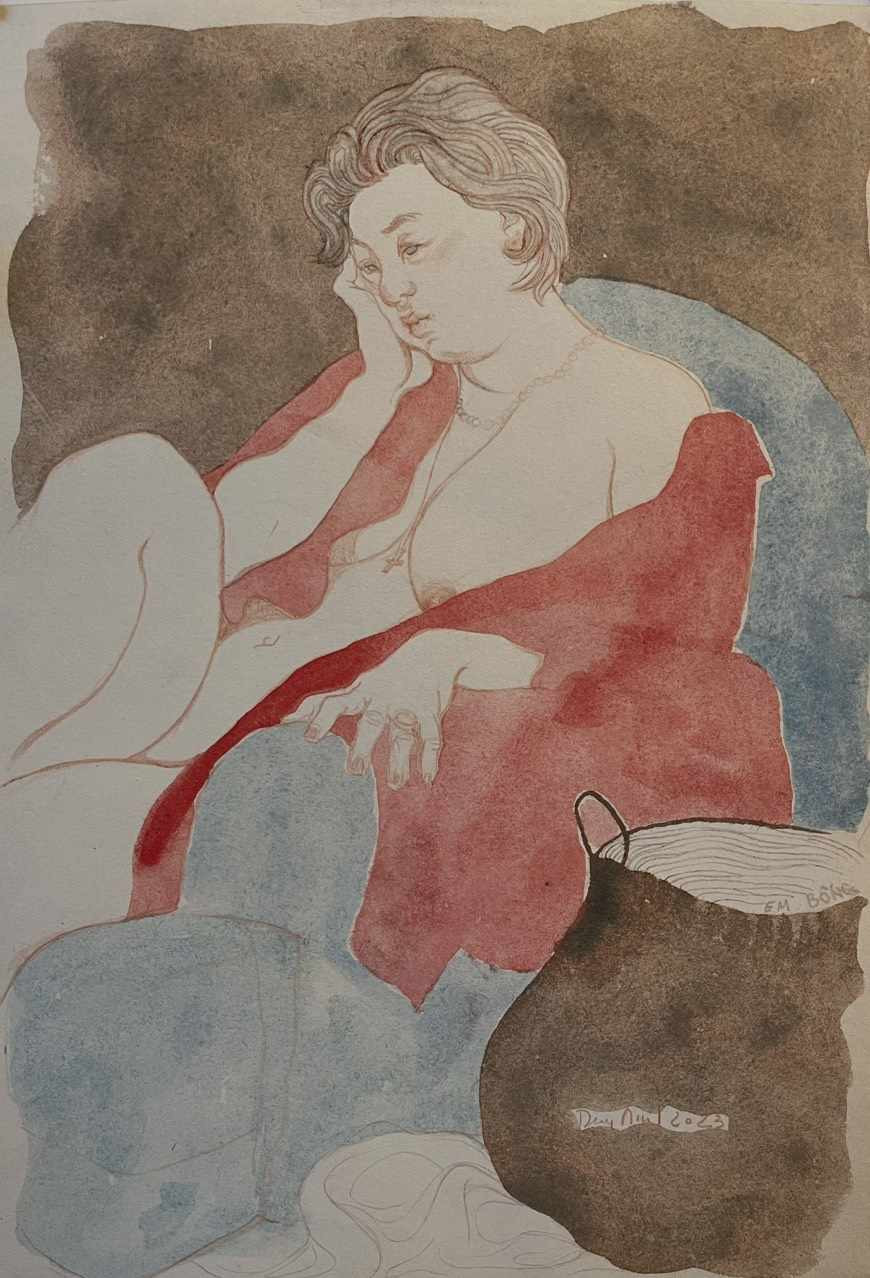
Curator Ly Doi argues that nude paintings celebrate the natural beauty and essence of the human form. In the art world, creating nude art is a standard practice, essential for enhancing aesthetics, education, and democratic values in art. As art appreciation evolves, society should embrace nude art as a legitimate and respected genre.
"A strong educational system will elevate art appreciation. Instead of narrow-minded views, people will adopt more open perspectives, allowing nude art to be understood and appreciated in its rightful context," Doi stated.
Art researcher Ngo Kim Khoi emphasizes that the artistic value of nude paintings transcends superficial concerns. To gain wider acceptance, public guidance on viewing nude art is crucial, starting from educational settings, exhibitions, and discussions. The aim is to normalize this art form and move beyond outdated, fearful attitudes.
"I often joke that the painting community needs a 'revolution' in its approach to nude art. We should treat nude paintings like any other subject, free from the stigma of sinfulness or wrongdoing," Khoi remarked.
Luong Xuan Doan, Chairman of the Vietnam Fine Arts Association, supports artists in the field of nude art. However, disagreements often arise between artists, managers, critics, and censorship boards regarding the artistic quality of these works. This gap between artistic creativity and managerial approval can hinder the licensing process for exhibitions.
"There remains a disconnect between the creative visions of artists and the perspectives of managers, affecting the approval process for exhibitions. Professionals knowledgeable in art should be involved in the review process," Doan noted.
Nude art: more than just body exposure

Artist Nguyen Hong Tuan believes that nude paintings attract audiences because they blend sensuality with familiarity, presenting human beauty in both specific and abstract forms. While both Western and Eastern nude paintings showcase the human form, Eastern works often emphasize modesty and subtlety.
"Today, artists create nude paintings with a sense of decorum. Licensing is less restrictive, but market development depends on overcoming both artist and public apprehensions," Tuan explained.
Artist Duy Anh highlights that the criteria for a beautiful painting are subjective and influenced by contemporary standards. Modern nude art often features bold colors and shapes, reflecting contemporary life and artistic expression.
"The varied opinions on nude art stem from cultural and personal differences. In today's art world, nude paintings represent more than just the human body - they embody cultural and philosophical attitudes," Anh observed.
Writer Kieu Bich Hau supports nude art, praising it for its celebration of human physical beauty and the harmony of nature's design. She believes that nude paintings convey profound humanistic values through the depiction of the human form.
"Nude art, particularly those depicting the female form, offers a unique world of artistry where sensitivity and refinement are fully expressed. Artists capture the beauty of the human body with reverence and respect, highlighting the inherent value of this art form," Hau affirmed.
Nude paintings celebrate freedom of expression and the celebration of human beauty. They encourage a liberated approach to art, allowing for the natural depiction of the human form.
"Nude art is a valuable genre that requires art lovers to appreciate and respect the artist's vision. I believe that nude paintings will continue to evolve and be recognized as an integral part of the art scene, both in Vietnam and globally," Hau concluded.
Tuan Chieu - Tinh Le